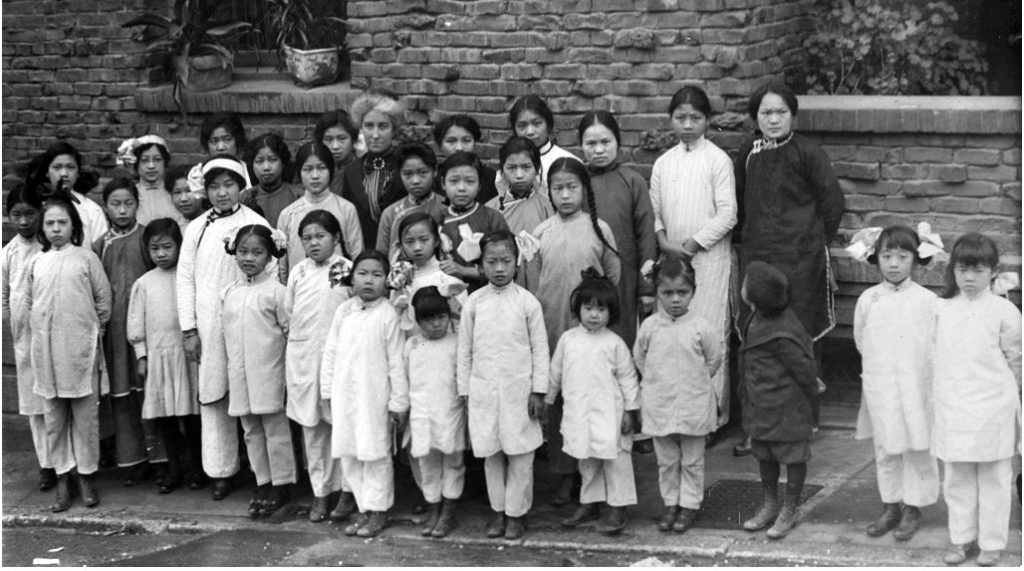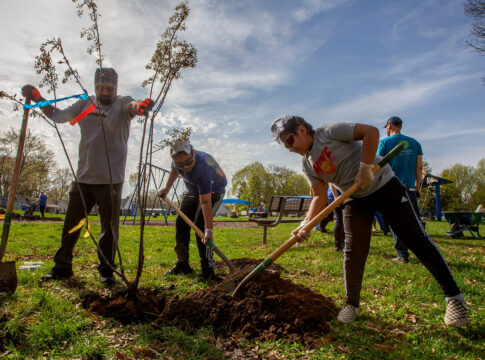
By Jennifer Zhan, AsAmNews intern
Journalist and author Julia Flynn Siler’s latest book The White Devil’s Daughters: The Women Who Fought Slavery in San Francisco’s Chinatown tells the true story of a San Francisco mission home that served as refuge for female Asian victims of trafficking during the late 19th and early 20th centuries.
The Japan Society of Northern California called the book an “unsparing look” at history and invited Siler to discuss her work at an event in San Francisco tomorrow on Oct. 30. Siler told AsAmNews she considers many parts of the story relevant today, especially considering that human trafficking is on the rise and that some continue to question the value immigrants add to this country.
At the Oct. 30 event, she said she plans to highlight the story of Yamada Waka, who fled to the mission home after escaping forced prostitution. Waka eventually returned to Japan, became a prominent activist and was later invited to the White House by Eleanor Roosevelt for her writing on women’s issues.
“Her story is one of the most inspiring stories in the book,” Siler said. “She was not rescued. She rescued herself, and really transformed her life. And she took her experience and ended up opening up a home in Japan very similar to the one that had helped her in San Francisco.”
LATEST STORIES
The stories of many other people are featured in The White Devil’s Daughters. What ties the “rather large cast of characters” together, Siler said, is a connection to the Sacramento Street safe house. That includes those who lived in the house, escaped to it, worked in it, and supported its cause to combat the slave trade, she said.

The Presbyterian mission home was later renamed Cameron House after the home’s original superintendent Donaldina Cameron, who was referred to as the “white devil” of Chinatown for her efforts to fight slavery.
According to Cameron House marketing and communications coordinator David Pon, the non-profit currently mainly provides community services, including support for Chinese-speaking domestic violence survivors and tutoring for neighborhood children. He said Siler’s book has been an exciting opportunity for Cameron House to share its story with a wider audience.
“We’ve really appreciated [Siler’s] efforts at making a deep-dive into the historical record to learn more about the lives of the women who passed through Cameron House,” Pon said. “It is by centering their stories and experiences that we can gain a more full picture into the lives of Chinese survivors of human trafficking from the perspective of those who were directly affected by this cruel and exploitative practice.”
Researching and writing this book took Siler over five years and led her to consult photo albums, family materials and many different archives. Throughout the process, she estimates that she visited Cameron House dozens of times.
The Wall Street Journal called the product of her labor a “sympathetic if at times critical” account, noting that the book does not shy away from critiquing the racial hierarchy of early mission work.
“Previous biographers really focused on the superintendent of the home, Donaldina,” Siler said. “I did not want to do that – I wanted to look more deeply at the Asian staffers at the home and focus on their contributions as well. I also sought out the help of good friends who are Asian to read the manuscript in early stages for issues that I might have overlooked as a White person.”
Pon said today, the majority of Cameron House staff is multilingual in Chinese and English. Cameron House has also worked to navigate empowering women in spite of cultural traditions that can be very “male-centric,” he added.
“We’re definitely not perfect, and just like our founders, we are a product of the prejudices and misconceptions of our era and environment,” Pon said. “But we still think that the work of self-reflection and improvement is important and necessary.”
He said due to books like Siler’s, Cameron House has “become awakened to the immense historical value” of its archives and is now in the process of preserving its files. Since The White Devil’s Daughters was released, Pon said there’s been an increase in family members reaching out for information.
Similarly, at various events centered on this book, Siler said descendants of the women who found freedom through the home have come up to her and introduced themselves.
“That’s really been the most meaningful part of this journey,” Siler said. “In some cases, people have said to me they had no idea of the story, that their grandparents or great grandparents never spoke of what happened.”
The Asian community’s response as a whole has been incredibly gratifying, she said. Aside from Cameron House, Siler said she’s also been able to connect with other organizations like the Chinese Historical Society of America and the Chinese Culture Center in San Francisco.
“There has been a tremendous amount of interest and support in this work,” Siler said. “My hope is that scholars in the future will build on what I’ve done, because there’s a lot more to say on the subject.”
AsAmNews has Asian America in its heart. We’re an all-volunteer effort of dedicated staff and interns. Check out our new Instagram account. Go to our Twitter feed and Facebook page for more content. Please consider interning, joining our staff or submitting a story.








